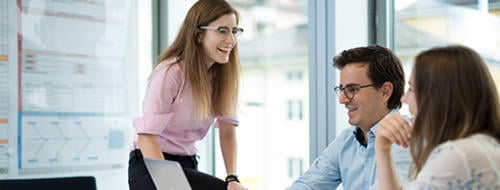The need to invest in our planet
The need to act on climate change increases in urgency every year. This year, the world’s leading scientists delivered a ‘final warning’ on the climate crisis: act now or it’s too late.
As a food business, we are both uniquely vulnerable to the impacts of climate change, yet also have significant opportunity to be part of the solution. We set out our ambition to advance regenerative food systems at scale and are making good progress on making this a reality.
So, what does "advancing regenerative food systems at scale" really look like?
For us at Nestlé it means putting more back into the system than we take out, whether that’s into nature and the communities we source from, into the economy, or into the health and enjoyment consumers get from our products.
In March, we published our 2022 Annual Report and Creating Shared Value and Sustainability Report. The report provides an update on Nestlé’s progress against a number of ambitious targets we have set ourselves including on our Net Zero climate goals.
For the first time, our emissions fell below the 2018 baseline and show that we have reduced 6.4 million tonnes of carbon against a business-as-usual scenario.
These emission reductions are the result of a wide range of activity across the company and its entire operations. We’ve stepped up our efforts to collaborate with farmers in our agricultural supply chains, where almost two thirds of our emissions come from.
We have set a target to source 50% of our ingredients from regenerative agriculture by 2030 and we’ll only get there in partnership with our farmers and suppliers.
Here are some examples of how we are doing this:
- We are working with nearly 200 wheat and dairy farmers in the UK to support practices that improve soil health, maintain and restore diverse ecosystems, and safeguard water resources. Our Milk Plan and Landscape Enterprise Networks (LENS) programme are an important enablers to help us do this.
- Last year, we launched our innovative income accelerator programme, which aims to improve the livelihoods of cocoa-farming families, while also advancing good agriculture practices, increased agroforestry and gender equality. Furthermore, we launched the Nescafé Plan 2030, to make coffee farming more sustainability.
Are renewable energies the green light towards a sustainable future?
Exploring alternative sources that allow us to power our operations through renewable energy is a win-win for Nestlé, enabling us to reduce our environmental impact, and lower our energy costs while contributing to a more sustainable future for generations to come.
- We use 100% grid-supplied renewable electricity across all of our sites in the UK and Ireland. We started sourcing renewable energy from wind farms in 2018 which now contribute to 50% of our UK electricity.
- At our coffee production factory in Tutbury, Derbyshire, we power the facility by solar panels and on-site biomass burns its waste coffee grounds to heat the entire site and save thousands of lorry journeys for removal.
- We are working on plans for heat pump installations in our York factory to remove steam and eventually design out the need for gas completely.
- At our Nestlé Waters plant in Buxton, 30% of the site’s energy need is generated by water and comes from a local hydroelectricity supplier – Derwent Hydroelectric Ltd.
How do sustainable logistics help us along the way?
Committing to a sustainable logistics strategy is essential in helping us to achieve our goals as it has the potential to reduce carbon emissions, support renewable energy, and encourage sustainable practices.
- At Nestlé UK and Ireland, we have switched 75% of our owned fleet of trucks from diesel to bio-fuel, a liquefied gas that is a by-product of waste which emits up to 95% less CO₂e.
- We are also introducing plans to increase freight capacity on trains to allow the double-stacking of products – a curtain-sided rail container with a raising roof. The project could have wide-reaching benefits such as reducing traffic congestion and emissions in the future.
Where to from here?
We know we have an important role to play in creating a more sustainable future, and we don’t take that responsibility lightly.
We have a huge amount to be proud of but know there is lots more still to be done, more partnerships to be formed, collaborations to embrace, and more to learn along the way.
Let’s invest in our planet, together.








